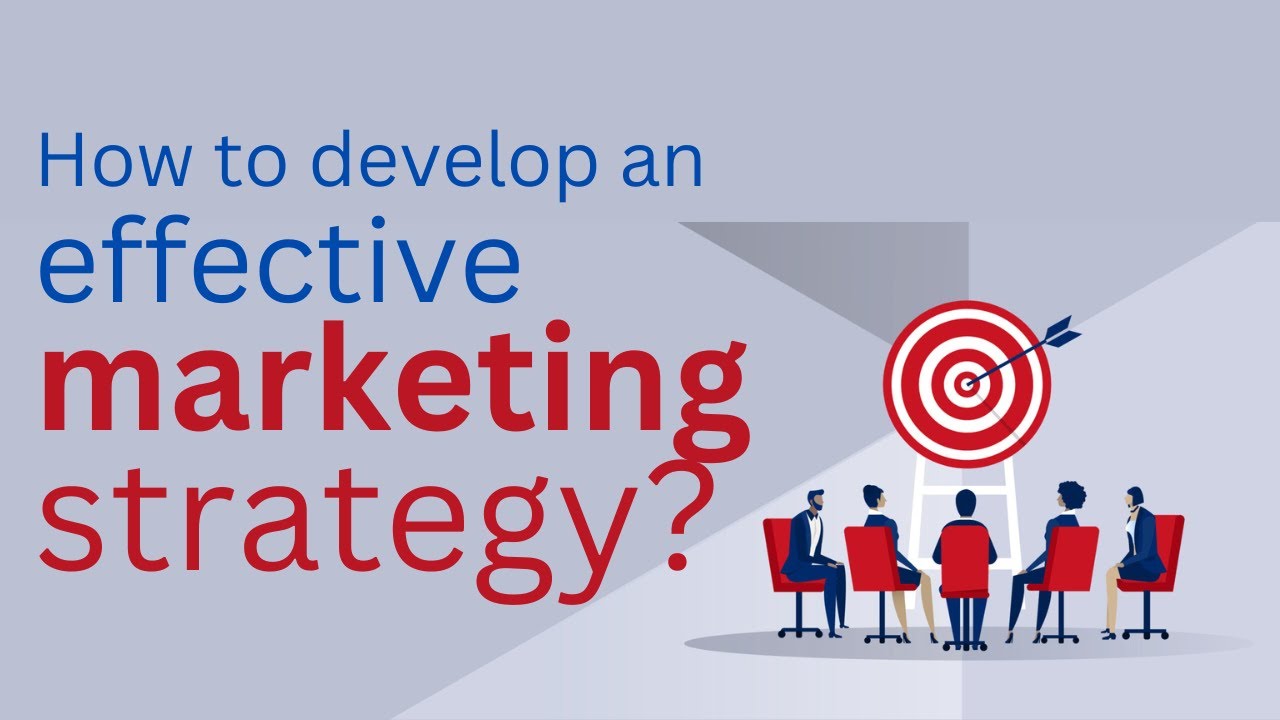Small and medium-sized businesses (SMBs) face unique challenges when it comes to marketing in today’s digital age. With fewer resources and smaller budgets compared to larger corporations, these businesses must be strategic and innovative.
Small business marketing is essential for reaching and engaging potential customers, building brand loyalty, and driving sales.
To succeed, SMBs need to adopt a marketing strategy that leverages digital tools and platforms.
From social media to email marketing, the goal is to maximise reach and impact efficiently.
By understanding the needs of your target audience and focusing on the right channels, we can create campaigns that resonate and convert.

Furthermore, utilising data-driven insights helps us refine our approach and measure success.
Analytics tools provide valuable information about what works and what doesn’t, enabling us to make informed decisions.
Effective SMB marketing involves a mix of creativity, strategy, and ongoing optimisation to stay competitive.
Key Takeaways
- SMB marketing is crucial for engaging potential customers and driving sales.
- Leveraging digital tools and data-driven insights enhances marketing efforts.
- A strategic and well-targeted approach maximises efficiency and impact.
Understanding SMB Marketing
Small and medium-sized businesses (SMBs) often face unique challenges in the field of marketing. These businesses must maximise their limited resources to effectively compete with larger enterprises.
Importance of Marketing for SMBs
Marketing is crucial for the success of SMBs. SMB marketing strategies are essential as they cater to the unique needs of small and mid-sized businesses, focusing on local, inbound, influencer, and performance marketing to maximize impact with limited budgets. It helps us reach our target audience, build brand awareness, and drive sales. Without a strong marketing strategy, even the best products or services can go unnoticed.
SMBs must be creative and resourceful with their marketing efforts due to limited budgets and resources.
Common strategies include leveraging social media, email campaigns, and content marketing.
Using tools like SEO can significantly boost our visibility and traffic, providing us with a competitive edge.
It’s essential for any SMB to understand its audience and tailor its messages accordingly to maximise engagement.
Distinguishing SMB and Large Enterprise Marketing
The approach SMBs take toward marketing differs significantly from that of large enterprises. While large companies often have substantial budgets and dedicated marketing departments, SMBs usually operate with leaner budgets and smaller teams.

SMBs must prioritise cost-effective solutions and measure their results closely.
For instance, SMB marketing often relies heavily on digital channels, where campaigns can be customised and budget-controlled. In contrast, large enterprises might invest heavily in traditional media and large-scale advertising.
SMBs also focus more on forming direct relationships with their customers. Personalisation and direct engagement are key strategies.
Large enterprises often automate and scale their efforts, which can sometimes lead to less personalised customer interactions.
Developing an Effective SMB Marketing Strategy
In developing an effective SMB marketing strategy, we need to set clear marketing objectives, understand our target audience, and allocate the marketing budget wisely.
A robust local marketing strategy is essential, leveraging local SEO and geo-targeted campaigns to reach potential customers in specific areas.
Each plays a crucial role in ensuring the success of our marketing efforts.
Setting Clear Marketing Objectives
First, we must identify our campaign goals and ensure they are specific, measurable, achievable, relevant, and time-bound (SMART).
Clear objectives help us track progress and determine success. For example, our goals might include increasing website traffic, boosting social media engagement, or generating more leads.

We should also align our marketing strategy with our business objectives.
If our business goal is to expand into new markets, our marketing efforts should focus on building brand awareness in those areas.
Well-defined objectives give direction and purpose to our campaigns, making it easier to assess their impact.
Understanding Your Target Audience
Understanding our target audience is essential for crafting an effective SMB marketing strategy.
We need to know who our customers are, what they need, and how our products or services can meet those needs. This involves segmenting the market based on demographics, psychographics, buying behaviour, and other relevant factors.
Creating detailed buyer personas can help us visualise our ideal customers.
These personas should include information such as age, gender, location, interests, and pain points.
By understanding our audience, we can tailor our marketing messages to resonate with them, improving engagement and conversion rates.
Allocating the Marketing Budget
Allocating the marketing budget effectively ensures we get the most out of our resources.
We need to decide how much to spend on different marketing channels, such as social media, email marketing, content marketing, and paid advertising. Prioritising channels that offer the best return on investment (ROI) is critical.

We should also allocate funds for tools and software that enhance our marketing efforts.
For example, investing in customer relationship management (CRM) systems can help us manage and analyse customer interactions, while analytics tools can provide insights into campaign performance.
Regularly reviewing our budget and adjusting our strategy based on performance data ensures our marketing plan remains effective and efficient.
Digital Marketing Essentials for SMBs
As small and medium businesses (SMBs), our success in the digital realm depends on mastering a few essential strategies. These include establishing a strong online presence, utilising search engine optimisation (SEO), leveraging email marketing, and employing effective content marketing techniques.
Building a Strong Online Presence
A robust online presence begins with a well-designed website that is easy to navigate and can help grow the business online.
Our website should reflect our brand and provide essential information about our products or services. It’s crucial to optimise our website for mobile devices since many users access websites via their phones.
Need a Business Website that generates sales? – We can help with that!
In addition to having an engaging website, Google My Business listings help us appear in local searches. This tool enhances our visibility and accessibility.
We should also actively manage our profiles on social media platforms to connect with our audience and build brand loyalty.

Search Engine Optimization Basics
SEO is a cornerstone of digital marketing.
By targeting specific keywords relevant to our industry, we can improve our website’s ranking on search engines. High-quality content that incorporates these keywords naturally is key.
Creating a mix of keyword-focused blog posts and other content helps us appear in more search results.
Technical SEO, including optimising our website’s load speed and ensuring it’s user-friendly, is essential.
It’s also beneficial to monitor our SEO efforts with analytical tools to identify what’s working and where we can improve.
Leveraging Email Marketing
Email marketing remains one of the most effective channels for reaching our customers.
Building an email list allows us to communicate directly with our audience. We can use this medium to share news, special offers, and valuable content.

Personalisation is crucial in email marketing. Tailoring messages to different segments of our audience increases engagement rates.
We should also consider using automated email campaigns to nurture leads and convert them into customers. Monitoring metrics like open rates and click-through rates help us refine our email marketing strategies.
Content Marketing Techniques
Content marketing involves creating and sharing valuable content to attract and retain customers.
This includes blog posts, videos, infographics, and social media updates. A content calendar helps us plan and schedule our content effectively.
Developing high-quality content that addresses our audience’s needs and pain points is crucial.
We should use various formats to keep our audience engaged. Integrating Search Engine Optimization (SEO) into our content marketing strategy by using relevant keywords can further increase our visibility online.
Surfer SEO is our go-to tool when it comes to optimizing content for SEO.

Maximising Engagement with Social Media Marketing
To maximise engagement with social media marketing, we need to choose the right social media platforms, create shareable content and calls-to-action (CTAs), and actively engage with user-generated content.
These steps will help us connect more effectively with our target market and demographics.

Choosing Suitable Social Media Platforms
Selecting the right social media channels is crucial for maximising engagement. Different platforms cater to different demographics.
For example, Facebook remains popular among a broad age range, while Instagram and TikTok often attract younger audiences. LinkedIn is ideal for professional and B2B interactions.
Understanding our target market’s preferences and behaviours helps us choose the best platform.
By analysing social media analytics, we can identify which platforms give us the highest engagement.
It’s also important to focus our efforts on fewer platforms where we can engage deeply rather than spreading ourselves too thin across many.
Creating Shareable Content and CTAs
High-quality, shareable content is key to engaging our audience.
We should aim to produce diverse types of content, such as blog posts, videos, infographics, and interactive posts.
CTAs are essential for driving interaction. They encourage followers to comment, share, or visit our website.
Effective CTAs are clear and action-oriented, such as “Share your thoughts in the comments” or “Check out our latest blog post”.
Using visual content increases shareability. Posts with images, videos, or infographics tend to get more engagement.
It’s also beneficial to stay updated with trends and incorporate them into our content to make it more relatable and engaging.
Engaging with User-Generated Content
Engaging with user-generated content (UGC) is a powerful way to build a community and foster trust. Encouraging users to create content related to our brand, such as reviews, photos, or videos, can significantly boost engagement.
We can run contests or giveaways to motivate our audience to produce UGC. For instance, asking followers to share their stories using our product and tagging us can create a buzz.
Responding to UGC promptly shows appreciation and builds loyalty. Highlighting UGC on our own platforms not only acknowledges our followers but also provides authentic content that can influence potential customers.
Leveraging Data-Driven Insights and Analytics
In today’s competitive market, small and medium-sized businesses (SMBs) can significantly benefit from using data-driven insights and analytics. These tools and techniques help in tracking performance, adopting CRM systems, and enhancing customer segmentation.

Tracking Performance with Metrics and KPIs
Using metrics and Key Performance Indicators (KPIs) enables us to track the effectiveness of our marketing efforts. Metrics like conversion rates, customer acquisition costs, and return on investment (ROI) provide a clear picture of our performance.
By regularly analysing these metrics, we can detect patterns and identify areas for improvement.
Monitoring KPIs helps in setting a baseline for our marketing strategies. Specific KPIs like click-through rates and cost per lead allow us to gauge the success of our campaigns.
Effective tracking makes it easier to allocate budgets and resources more wisely, ensuring maximum impact and efficiency.
Adopting CRM for SMB Marketing
Customer Relationship Management (CRM) systems are vital for SMB marketing. Adopting a CRM system helps us manage customer interactions and store valuable data about our clients.
Tools like Salesforce or the SMB Hub business dashboard enable us to gather and analyse customer data, making it easier to tailor our marketing efforts.
CRM systems improve our engagement by providing insights into customer preferences. We can personalise our communications, ensuring that they are relevant and beneficial, rather than intrusive.
This leads to higher customer satisfaction and loyalty, driving growth and profitability.

Enhancing Customer Segmentation
Customer segmentation is crucial for targeted marketing. By analysing data, we can divide our customer base into meaningful segments based on demographics, behaviours, and purchase history. This allows us to craft specific messages and offers for each segment, increasing the relevance and effectiveness of our campaigns.
Using data-driven insights helps us identify high-value customers and tailor our strategies to maximise engagement.
For example, by focusing on customers with the highest lifetime value, we can improve our return on investment. Enhanced segmentation ensures that our marketing efforts are not wasted and that we reach the right audience with the right message.
SMB Advertising Strategies
In this section, we will cover effective SMB advertising strategies, focusing on Pay-Per-Click (PPC) advertising options, retargeting techniques, and the importance of authenticity in ads.

Exploring PPC Advertising Options
Pay-Per-Click (PPC) advertising is an effective way for small to medium-sized businesses to reach their target market. With PPC, we only pay when someone clicks our ad, making it budget-friendly.
Google Ads and Bing Ads are popular platforms for PPC advertising. They offer advanced targeting options, such as demographics, location, and interests.
To optimise our campaign, we start by researching keywords relevant to our products or services. Using tools like Google’s Keyword Planner helps us find the best keywords with high search volumes and low competition.
Writing compelling ad copy is crucial; it needs to grab attention and encourage clicks. Regularly monitoring our PPC campaigns ensures we stay within budget and adjust bids or keywords for better performance.
Utilising Retargeting for Conversions
Retargeting is a powerful technique where we serve ads to users who have previously visited our site. This strategy keeps our brand top-of-mind and encourages potential customers to return and complete a purchase.

Platforms like Facebook Ads and Google Ads support retargeting with ease.
We start by installing tracking pixels on our website. These pixels collect data on visitor behaviour, which we use to create custom audiences.
Crafting retargeting ads requires a clear call-to-action (CTA) and relevant content. We should avoid showing the same ad repeatedly, which could annoy users. Instead, rotating different ad creatives helps keep our audience engaged.
Analysing the performance data allows us to tweak our strategy and improve conversion rates.
Advertising with Authenticity
In today’s digital world, authenticity in advertising is key to building trust with our audience. Authentic ads reflect our brand values and connect genuinely with our target market.
Social media platforms, like Instagram and LinkedIn, are excellent for showcasing our brand’s authenticity.
To create authentic ads, we use real images, testimonials, or user-generated content. Highlighting our team and sharing behind-the-scenes stories make our brand more relatable.
Transparency in our messaging, such as honest product reviews or the story behind our company, resonates well with audiences. Consistency in our voice and visuals across all advertising channels strengthens our brand identity.
Cultivating Brand Loyalty and Authority
Developing brand loyalty and establishing brand authority are critical elements for SMB marketing success. Building a loyal customer base ensures repeat business, while brand authority generates trust and credibility.

Fostering Customer Loyalty Programmes
Customer loyalty programmes can significantly enhance engagement and retention. Loyalty programmes reward customers for repeat purchases, creating a sense of value and appreciation.
We can start by offering exclusive discounts to loyal customers, providing them with incentives to return. By consistently delivering a high-quality value proposition, we strengthen the connection with our customer base.
Creating a tiered rewards system allows customers to receive incremental benefits based on their level of engagement.
For instance, the more they spend, the more points they earn, which can be exchanged for rewards.
It’s also beneficial to collect feedback through these programmes, helping us tailor our services to better meet customer needs. Loyalty goes hand in hand with understanding what our customers seek.

Establishing Brand Authority Online
To build brand authority, we need to establish credibility and trust in the digital space. One effective method is through content marketing.
Publishing well-researched and insightful articles or blog posts helps position us as experts in our field.
Utilising social media influencers can further enhance our authority. Influencers act as brand advocates, sharing our message with their followers and boosting our brand awareness.
Encouraging customer reviews and testimonials is another powerful tool. Positive reviews from existing customers validate our credibility and encourage new customers to trust our brand.
Active participation in industry forums and online communities also reinforces our position as a knowledgeable leader, helping build long-term relationships with potential and existing customers.
Content Creation: Videos, Blogs, and More
In the realm of digital marketing, creating high-quality content is essential for small and medium-sized businesses (SMBs). We will explore various methods to engage your audience effectively through videos, blogs, and other forms of content.

Developing Engaging Video Content
Videos are a powerful tool in content marketing. They can convey messages quickly and memorably. To create engaging video content, focus on storytelling.
Show the value of your product or service through real-life scenarios and customer testimonials. This connects viewers emotionally.
Use tools like InShot for mobile video editing. It offers features like trimming, speed adjustment, and filters.
Including a video on a landing page can increase conversion rates by 80% and make your website 53% more likely to feature prominently in Google search results.
Regularly upload to YouTube to tap into over a billion hours of video watched each day. Also, experiment with short-form and long-form videos for different platforms. Videos are versatile and can significantly boost engagement and revenue.
Utilising Blogs for SMB Marketing
Blogs play a crucial role in our content marketing strategy. They help drive traffic to our website and establish us as an authority in our industry.
When crafting blog posts, it is important to target specific keywords relevant to our business.
Creating compelling blog posts involves providing value through tips, how-tos, and informative articles. Posting regularly keeps readers engaged and improves our site’s SEO.
In addition, use multimedia elements like infographics to make blog content more appealing. Remember to link posts internally and externally to improve SEO further.
Ultimately, consistent, high-quality content builds trust and drives conversions.
Producing EBooks and Guides
EBooks and guides are excellent for offering in-depth information on complex topics. They position us as an expert and can be used as lead magnets to collect email addresses.

Start by identifying key issues or questions within our industry that we can address comprehensively.
Design the eBook professionally, with clear headings and images to break up text. Offer practical tips and step-by-step guides.
We can promote the eBook through our blog, social media, and email marketing.
Guides and eBooks can also serve as valuable resources for existing customers, providing deeper insights into using products or services effectively. They not only educate but also strengthen customer loyalty.
Converting Leads into Sales
Turning prospects into actual customers involves targeted efforts and strategies. We need to focus on creating personalised email campaigns and optimising e-commerce strategies to achieve this goal.

Creating Personalised Email Campaigns
Personalised email campaigns are essential for engaging our audience. We should start by segmenting our leads based on their buyer persona, interests, and behaviour.
This allows us to tailor our messages to address their specific needs and preferences.
Our emails should include strong CTAs and relevant content that resonates with the recipient.
For example, if a lead has shown interest in a particular product, we should send follow-up emails highlighting that product’s benefits and special offers.
Using tools that track email opens and clicks can help us refine our approach. By analysing this data, we can improve our conversion rates by adjusting our messaging and timing.
Optimising E-Commerce Strategies for SMBs
To enhance our e-commerce strategy, we need to create a seamless shopping experience. This means ensuring our website is user-friendly, fast, and mobile-optimised.
Simplifying the checkout process can help reduce abandoned shopping carts.
We should also focus on showcasing our products effectively. High-quality images, detailed descriptions, and customer reviews can help build trust and encourage purchases.

Implementing remarketing campaigns can bring back visitors who have previously left without buying anything.
Additionally, we should incorporate personalised product recommendations based on browsing history to boost our sales.
By understanding our audience’s preferences and shopping habits, we can present them with the products they are most likely to purchase.
Frequently Asked Questions
In this section, we’ll answer some common questions about SMB marketing. We’ll cover strategies, digital marketing, and differences compared to large enterprises, among other important topics.
What strategies are most effective for SMB marketing?
It’s crucial for small and medium-sized businesses to focus on their unique selling points. Engaging with local communities can be very effective. Also, having a well-designed website is essential, as it’s often the home base for your marketing efforts.
Additionally, setting SMART goals helps track progress and achieve advertising objectives.
How can digital marketing be tailored to small and medium-sized businesses?
SMBs should go where their customers go, rather than trying to be everywhere at once. Using social media platforms popular with your target audience can be highly effective. Email marketing and local SEO are also important.
These methods allow for high engagement without requiring the extensive budgets that larger enterprises have.
What are the key differences in marketing for SMB versus large enterprises?
SMBs often have limited resources, so they need to be more agile and creative with their marketing efforts. While large enterprises can execute broad campaigns, SMBs need to focus on targeted, community-oriented approaches.
Also, measuring ROI and adapting quickly to changes are more critical for SMBs due to their smaller margins and budgets.
How important is market research for SMBs, and how can it be conducted effectively?
Market research is crucial for understanding customer needs and making informed decisions. SMBs can use various tools to gather valuable insights.
For example, online surveys, social media polls, and customer feedback can provide the data they need. Tools like Google Analytics can also help track website traffic patterns and user behaviour, providing actionable data for improving marketing strategies.
In what ways can legal marketing be adapted for small and medium-sized businesses?
Legal marketing for SMBs needs to be clear, compliant, and trust-building. Using content marketing to provide valuable information can establish credibility.
SMBs should also focus on local SEO to reach clients in their area. Partnerships with local firms can also be advantageous, providing a network of referrals and shared promotions.
How does B2B marketing differ when targeting SMBs compared to larger organisations?
When targeting SMBs, the approach should be more personalised and relationship-focused.
Emphasise the practical benefits and cost-effectiveness of your products or services.
Unlike larger organisations, SMBs often look for immediate, tangible results.
Customised presentations and direct communication tend to be more effective in this context.





